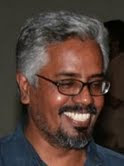Censoring Cable TV Network
Cable around Cable TV Network
This week the Information and Broadcasting Ministry has issued a notification to the effect that no film, film song, music video or even their promotionals or trailers can be beamed into television through the cable network without clearance from the Central Board of Film Certification. This notification comes into immediate effect and the condition is applicable to content produced in India and elsewhere.
This could only be described as a draconian measure by the state to curb freedom of expression. Right from the beginning of the television era in India, the local cable television networks have played a major role not only as ‘middlemen’ between television channels and the consumers/subscribers, but also as producers of local content. During the last decade, these networks have grown into one of the most vibrant medium in the country. This has been so especially in Kerala, and so, the said decision is going to very seriously affect the cable television industry in the state. The verve and commitment with which they have taken up local issues and events, covered incidents and happenings have given them great popular appeal and influence. Obviously, it is this influence over public opinion and imagination that disturbs the centres of power.
Two things mark the cable channels apart from the pan-language and national channels. One of their major strengths is penetration and reach. They beam audiovisual signals into the remotest parts of the state, where satellite TV is seldom available. Second, they carry local content in great detail and depth, something the satellite channels can never match or compete with. While the satellite channels ‘cover’ only the ‘major’ issues, the local cable television network have given ample time and attention to the issues at the grassroots. And this local content and diversity is what makes them popular and plays a crucial role in creating a strong sense of community among the local population.
Moreover, it is a Paleolithic measure in the age of Information and Communication Technology revolution, where any kind of content, text, audio or video can be transmitted at no time from anywhere to anywhere in the world. And imagine the CBFC watching and passing the 24 Hours of audiovisual content of thousands of channels everyday before telecast!
Such laws are not applicable in the case of satellite channels now, nor is it practical with live telecasts. So, instead of imposing such anti-freedom laws the government should have thought of introducing some kind of licensing system to ensure competency and accountability, and putting in place more democratic mechanisms to monitor the content of cable television networks. Such monitoring has to be essentially consensual in nature and not an imposition from above.


0 Comments:
Post a Comment
Subscribe to Post Comments [Atom]
<< Home